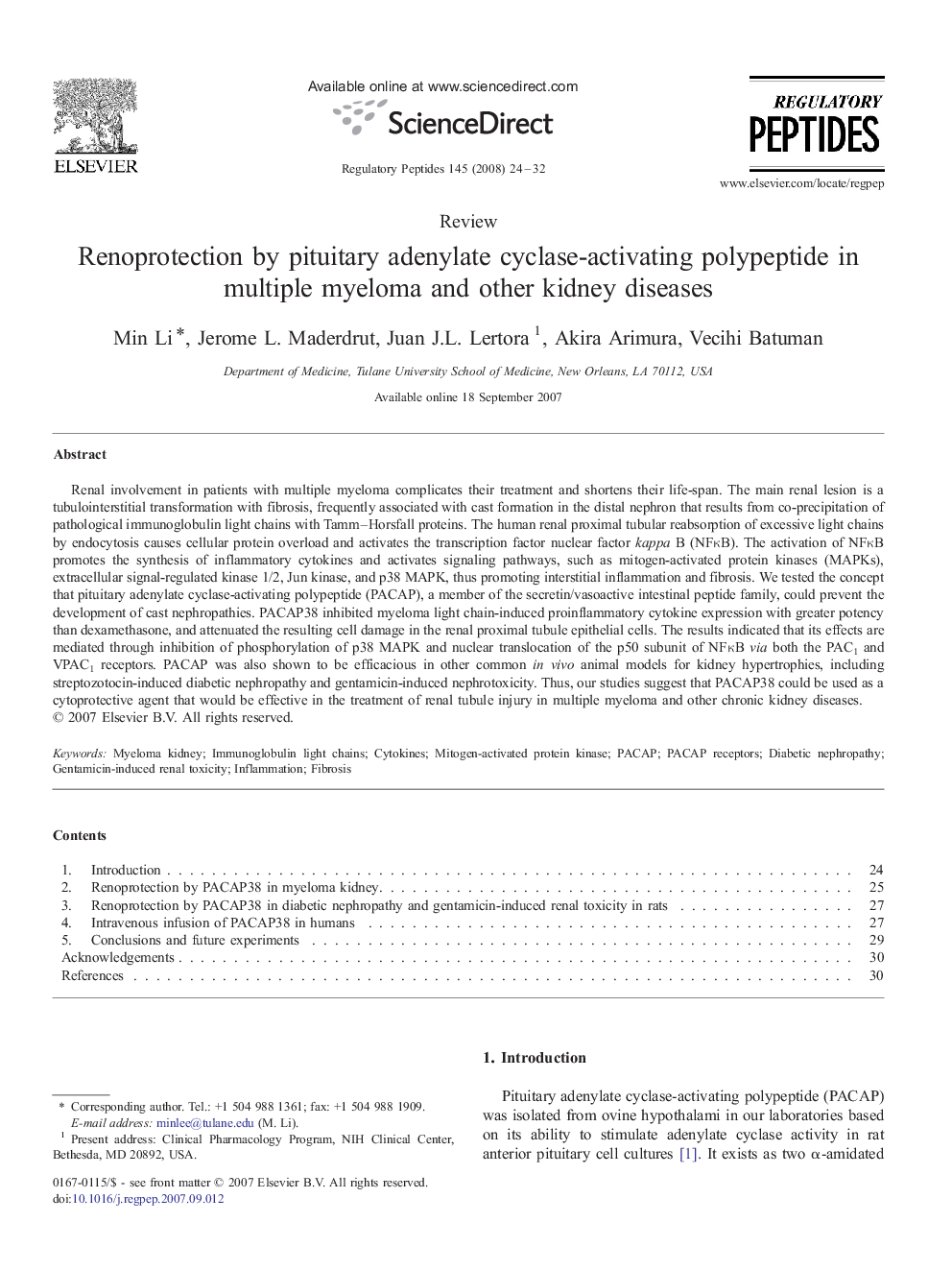| Article ID | Journal | Published Year | Pages | File Type |
|---|---|---|---|---|
| 2023316 | Regulatory Peptides | 2008 | 9 Pages |
Renal involvement in patients with multiple myeloma complicates their treatment and shortens their life-span. The main renal lesion is a tubulointerstitial transformation with fibrosis, frequently associated with cast formation in the distal nephron that results from co-precipitation of pathological immunoglobulin light chains with Tamm–Horsfall proteins. The human renal proximal tubular reabsorption of excessive light chains by endocytosis causes cellular protein overload and activates the transcription factor nuclear factor kappa B (NFκB). The activation of NFκB promotes the synthesis of inflammatory cytokines and activates signaling pathways, such as mitogen-activated protein kinases (MAPKs), extracellular signal-regulated kinase 1/2, Jun kinase, and p38 MAPK, thus promoting interstitial inflammation and fibrosis. We tested the concept that pituitary adenylate cyclase-activating polypeptide (PACAP), a member of the secretin/vasoactive intestinal peptide family, could prevent the development of cast nephropathies. PACAP38 inhibited myeloma light chain-induced proinflammatory cytokine expression with greater potency than dexamethasone, and attenuated the resulting cell damage in the renal proximal tubule epithelial cells. The results indicated that its effects are mediated through inhibition of phosphorylation of p38 MAPK and nuclear translocation of the p50 subunit of NFκB via both the PAC1 and VPAC1 receptors. PACAP was also shown to be efficacious in other common in vivo animal models for kidney hypertrophies, including streptozotocin-induced diabetic nephropathy and gentamicin-induced nephrotoxicity. Thus, our studies suggest that PACAP38 could be used as a cytoprotective agent that would be effective in the treatment of renal tubule injury in multiple myeloma and other chronic kidney diseases.
